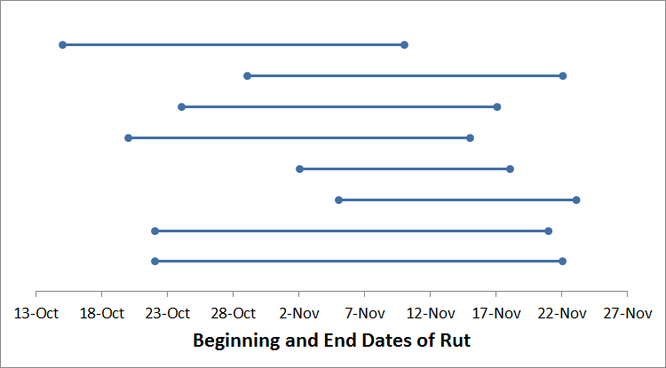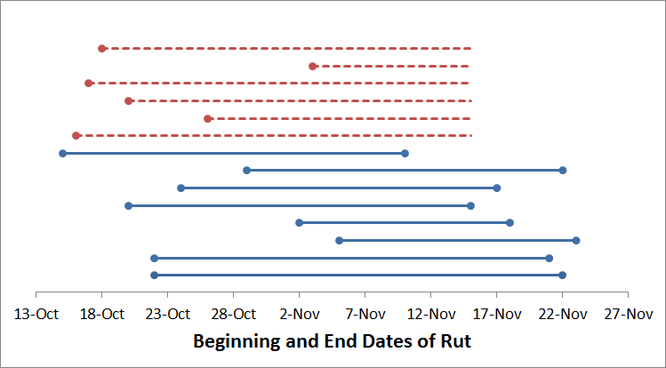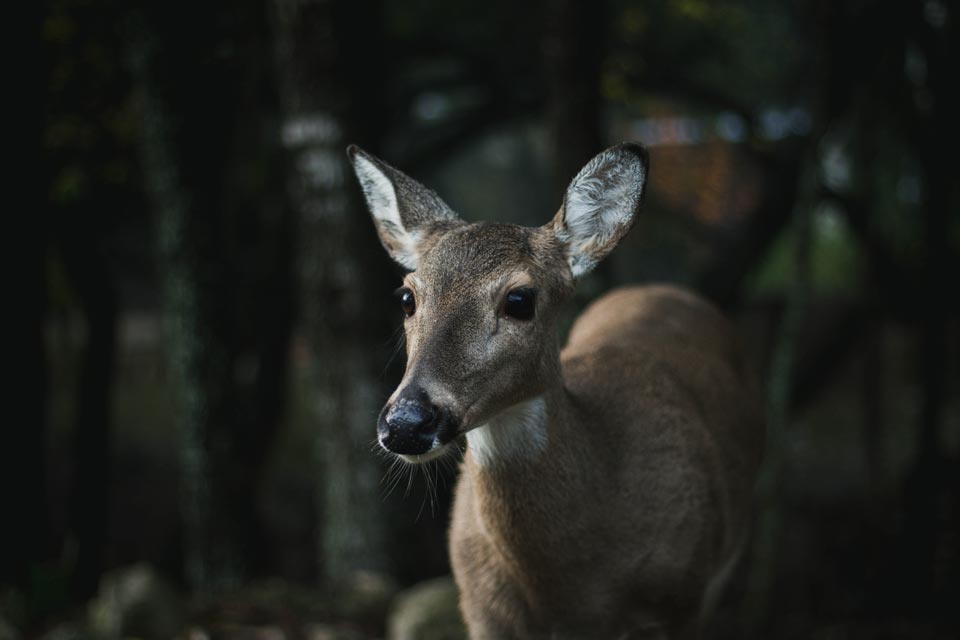Depending on your perspective, the week of November 1-7, 2015 was either miserable or fantastic. If you’re a grouse hunter, you are squarely in the miserable camp. If you’re a runner, you are in the fantastic camp.
But what if you’re a deer?
We continually receive emails and comments about how the rut is shut down or how deer go nocturnal whenever the mercury rises this time of year.
This is where we are big fans of the Missouri state moto – Show me! Let’s break out the data and see if this frosty pumpkin proverb holds true.
We need a benchmark so let’s check out 2014.
The studio was fired up and movies were produced that plotted the movements of collared bucks beginning October 1st and ending November 30th. We know those dates encompass the rut.
Below is the 2014 movie for Buck 8917 (Remember him? He’s our most famous blog deer).
When his movements are put on the big screen, his rut starts on October 29th and end on November 22nd (he does make a big movement on November 24th, but that was also bear season). We may quibble about a day or two but it’s fairly obvious when these bucks start looking for a hot date. Conversely, it’s fairly obvious when these bucks lose that lovin’ feeling.
For each buck in 2014, the beginning and end of their “rut-like” movements is recorded in the graph below. Each horizontal line is a different buck. Breeding likely occurred outside the beginning and ending dates, but those rapid, crazy movements pretty much bracket the start and end points.

Now what about 2015 (the red dashed lines in the graph below)? The rut isn’t over yet but we can look at when it started.

See any difference? Me neither.
Now, what about this “nocturnal” thing? Does starlight enhance the mood? Did the cool evening breeze remind them what time of year it is?
Let’s look at their daytime and nighttime movements during that hot and sticky week of November 1-6 (We are leaving off Saturday because it was relatively cool compared to the rest of the week).
It’s a special time of year so the collars obtain a location every 3 hours on these bucks.
Here’s how much they moved
- During the daytime – an average of 455 yards every 3 hours.
- During the nighttime – an average of 426 yards every 3 hours.
See any difference? Me neither.
So be it hot and sticky or frosty pumpkin weather, bucks don’t seem to care.
But you may notice how variable the beginning and ending date is for the bucks we are following each year. That’s because what turns on each buck depends on their local environment.
What’s a sure fire way to turn on a buck? A doe in estrous.
Does cycle regardless of temperature. So hot, cold, balmy, or brisk – if a doe is in estrous, a buck will be in “rut.”
On average, the rut is the same time every year. And certainly by the first week in November, all bucks are on the move.
Don’t let the weather fool you! Deer don’t wait for frost to be on the pumpkin.
-Duane Diefenbach and Jeannine Fleegle
If you would like to receive email alerts of new blog posts, subscribe here.
And Follow us on Twitter @WTDresearch
